#film comparison
Text
Quickly and poorly reviewing and ranking adaptations of Jane Eyre (1996, 1997, 2006, 2011) by their pros and cons:
1996 pros:
Best fire scene, easily. It actually gave me that excited feeling that good cinema gives a person. Much of the cinematic art was enjoyable altogether, including the costumes.
This film probably has ond of the best Bertha's in my opinion. She's truly sympathetic, beautiful, and fierce. probably tied for my favorite Bertha actress with 2006. She and Poole are given little time in the story, however.
Most adaptations shit on St. John. Here, that isn't the case. What little time he has is spent in making him much more appealing than I've ever seen him, both physically and characteristically. I like this, because many forget that Jane did love him in her way, and he is supposed to be attractive and nice despite his zealotism.
1996 has the best Adèle, which is amazing for me as a big Adèle fan. There is more focus on her and her relationships with Jane/Rochester. I particularly love the scene where J draws R and Adèle tries to play cupid a little, and when Adèle is offended when the ladies insult Jane.
Best Lowood plot by far. This is the first time I've been able to stand the Young Jane scenes, and little time was devoted to her early life with the Reeds, just enough to let us know she was abused. I like this choice. The young actresses playing Jane and Helen were the best and most rebelious I've seen yet. Their hair cutting scene brought tears to my eyes, which rarely ever happens for me.
Good Blanche plotline. I absolutely love the cinematography/aesthetic & set design.
1996 cons:
the actors are individually endearing in some ways (the scene of Jane and the mirror is particularly touching, as is their reunion). However, The biggest downside to this adaptation is that the chemistry between Jane and Rochester was lacking in my opinion. this is particularly notable in their meeting scene and first proposal scene.
William Hurt is a fantastic actor, and he's likeable, but he's not my favorite Rochester ever. He's alright. On a rewatch I could see myself warming to him more.
I love Charlotte Gainsbourg more for her music than her acting. Granted, she was young here like Jane is supposed to be, so I do not blame her. Visually, aside from her height, I can absolutely see her as Jane. As the film went on I warmed to her acting style; Jane Eyre is a hard role to perform due to her inwardness. I don't think she was horrible, but Anna Paquin (of later True Blood fame) as Young Jane Eyre somewhat outshined Gainsbourg.
I was disappointed in Adèle being sent away to school before the disaster and her not coming back in the end (why couldn't they have had her running with Pilot in the landscape shot!!!).
1997 pros:
Maybe the most accurate Jane and Rochester. I wasn't expecting to like him at all but he blew me away. excellent chemistry between the actors. The dancing scene was very captivating, as was the scene with him jumping from the walkway, their outdoor talks, him chasing her down the stairs — really, I was impressed, because I thought I'd hate this film. Like in the novel and in 96, both actors are a bit conventionally unattractive (well, compared to 11 and to some extent 06) - and like them, the characters grow on you.
BEST ST. JOHN (although 2006 has the best Rivers sisters) - St. John is described as being nice though serious, and looking like a statue of a Greek God with all the coldness AND beauty - and this movie is the only one who relatively understood that assignment (96 came close emphasizing his niceness). Most adaptations adapt his coldness but not his conventional Eurocentric good looks, which not only symbolize his colonizer attribute but also his appeal to Jane and the others. It's also important to have a conventionally handsome actor play St. John just as it's important to have a conventionally less attractive Jane Eyre because one theme of the novel is the critique of Victorian physiognomy & beauty; Jane/Rochester being unconventionally attractive is a contrast to Bertha, St. John, Blanche, Georgiana being attractive, so I think this element is not inconsequential. The difficult part is that beauty is highly subjective, so relying on conventional standards is key, as is the reminder that Victorian standards were a bit different from our own.
good Lowood plotline, good Gateshead plotline, fantastic Adèle with lots of adorableness & miraculous though OOC bonding between her and Rochester, fantastic costuming (though I don't know about accuracy), good Blanche plotline overall. Probably my favorite Bertha plotline for being sufficiently creepy.
1997 cons:
this isn't really a con for me but many people may dislike 97 Rochester for being passionate to the point of coming off crazy, and physical domineering as when he grabs Jane when she tries to leave — however, this does kind of fit for canonical Rochester & I don't mind it since he's supposed to be that way, but this is still arguably a con nevertheless. he does come off as too forward but i get they were trying to capture the whole overpassionate thing. it does come off as a little more toxic than other depictions perhaps!
I have very few complaints overall. I don't think the chemistry is as appealing as 2006, but it is accurate. I wish there was more Adèle, but you can't have everything.
The posters are bad and make the actors look worse than they are which subsequently turns people away. I think 1996 was marketed a bit better but that 2006 also suffers from bad poster syndrome which had an effect on me also. Presentation is important; marketing and advertising are also important in cinema. The aesthetic isn't as good as 1996 although I don't think the visuals are bad overall.
Jane is a little dissociative seeming, which can be off-putting for myself and other viewers I assume, but to be fair she is described as being like a weird little elf creature in the book, and the actress plays this very well, actually looking quite ill when Rochester asks if she is.
2006 pros:
Best chemistry between Jane/Rochester by far and for this reason will always be my favorite because it actually made me fall in love with Rochester in the end though I didn't like his portrayal at all at first (that's power! — and my love for this Rochester should arguably be a con for the sake of my sanity and pride). best Rochester imo and a fantastic Jane. I love love love the way they did the Rochester storytime flashbacks and fleshed out his character as a result.
Best and most enjoyable Blanche Ingram plotline by far (although no one likes the lack of Rochester-in-drag, the party scenes & insertion of the twin flame theory was delightful).
some of the best dialogue, fantastic Adèle plotline, good Bertha plotline, best Pilot, best Rosamond, good costuming, good sets/locations (the fairytale ambience of Jane walking outside before meeting Rochester! Rochester's weird study!), I like the extra focus placed on themes such as nature/genetics/science, religion, travel, sexuality, etc.
2006 cons:
I dislike the way they did the Lowood and Gateshead plots, and although the Rivers sisters were good, I resent their St. John plotline for the most part. I disliked the lack of mystery surrounding Bertha; I think they made it way too obvious & not creepy enough, especially in showing her perspective from the window and giving her lines (one line, calling Jane a whore in Spanish) which no other adaptation does. I was sorely bored before and after Thornfield and only really revived when she got back to Ferndean (although Jane's flashbacks and some of the St. John plotline [the references to love, reminding us of her inner thoughts of Rochester] kept me alive). I suppose there were prices to pay for the excellence of the Jane and Rochester moments. - in comparison these seem like small prices, but still!
2011 pros:
deciding to go with a non-linear structure was a fantastic choice though I was skeptical of it at first, good St. John plotline for the most part & which they put emphasis on, really fantastic Jane with a lot of good fierce moments & lines, maybe the best Gateshead plotline including Mrs. Reed & the Red Room scene (although the lack of red was disappointing, and the lack of explanation for the chimney monster is conflicting – was it all in her head?), good young Jane, one of the best Richard Masons, star-studded cast, good dialogue, maybe the best costuming, Aesthetic™️
2011 cons:
least favorite adele (not insulting the child actress, this is the fault of the writers/directors)
— this is where i call security to protect me from an onslaught of jane eyre 2011 fans here on tumblr. alright, maybe i should watch it again — but i was expecting a lot more. particularly from michael fassbender as mr. rochester. probably my least favorite rochester by far & the least sympathetic. this rochester captures the dark and dangerous part of him but imo not so much the higher feelings that define him. the lack of humour & lack of unrepressed passion/drama/rage is noticeable - rochester isn't supposed to be quiet; as toby stephens (2006) said in an interview, rochester never shuts up in the book, he's really too eccentric to even be adapted accurately; he has to be toned down to be realistic, but here he's muted too far. - i felt like mia was carrying all of their scenes on her back & that the chemistry really rested on her primarily.
Cinematography-wise, there are some gems in the stills (famous hand holding gif), but I dislike the overall muted palette of the film; many will think this suits the tone and in some ways I agree, however, I will always prefer color and dislike the epidemic of desaturation we've seen so often in 21st century cinema. For this reason, 96, 97, 06 all triumph against 2011 aesthetically for me personally, although I still recognize some of the artistry of 2011, it is not my preference.
My overall ranking: 2006 (primarily for Jane/Rochester), 1997 (excellent overall), 1996 (good but flawed), 2011 (I tried but overall did not enjoy it).
#jane eyre#jane eyre 2011#jane eyre 2006#jane eyre 1996#jane eyre 1997#mr rochester#charlotte bronte#charlotte brontë#the brontes#movie reviews#film review#film comparison#film reviews#cinema#adaptations#critique#my analysis#my reviews#my opinion
41 notes
·
View notes
Text
Maybe this is an inadequate comparison, but I find these two characters’ situations to be similar enough to warrant mentioning.
Think of the iconic finger-pricking scene from Sleeping Beauty - we all know it. It is quite clear that Maleficent is violating Aurora’s free will. Aurora is not in control of her own mind; Maleficent hypnotizes her. Aurora does not want to prick her finger; Maleficent forces her to do it. And as an ordinary girl with no powers of her own, she has no chance of adequately fighting back against Maleficent’s magic. Yet even in that scene, we see her inner strength. The fairies yell “don’t touch anything!” and not only does Aurora hear them, she actually moves her hand back in obedience. Then Maleficent reiterates “touch the spindle” and overpowers her will once more. And as far as I’ve read and heard, everyone who watches the film understands this. I’ve never heard any blame thrown at Aurora (though I’m sure it’s been done sometime by some ignorant viewers). Everyone understands that this isn’t her fault, that she tried her best to resist but didn’t have a chance. She gains our sympathy, not our contempt or scorn.
So why can’t everybody extend Frodo Baggins the same courtesy? Maleficent’s indomitable power over Aurora is made clear in only one scene, but the Ring’s indomitable power over Frodo is made clear throughout an entire book / three entire movies. And Frodo’s strength is made even clearer … for 6 months straight, while walking thousands of miles on foot, he still resists it and fights it all the way into Mordor, all the way into the one place where the Ring would be in danger. And yet … some people still blame Frodo for being ultimately unable to defeat the Ring’s will in Mt. Doom?! They still say it’s his fault?! They still say he was weak and useless?! One reviewer actually wrote and printed that he “should’ve been executed in Gondor” for not destroying the Ring himself?!
What is WRONG with people?!!! Aurora and Frodo’s situations are pretty much the exact same - the only difference is that Frodo had it EVEN WORSE than Aurora. Wake up and smell the coffee, for heaven’s sake!!
I can’t believe there still exists a need for this point to be made. Yet I once again stumbled across words of Frodo hate and felt I had to put this out there.
#frodo baggins#princess aurora#film parallels#film comparison#sleeping beauty#sleeping beauty 1959#lotr#jrr tolkien#lotr books#lotr movies#lord of the rings#maleficent#the one ring
47 notes
·
View notes
Text
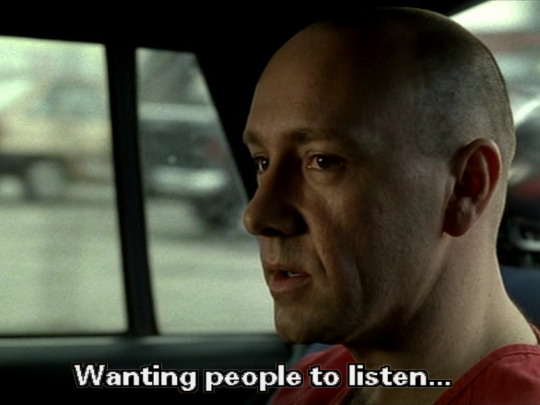

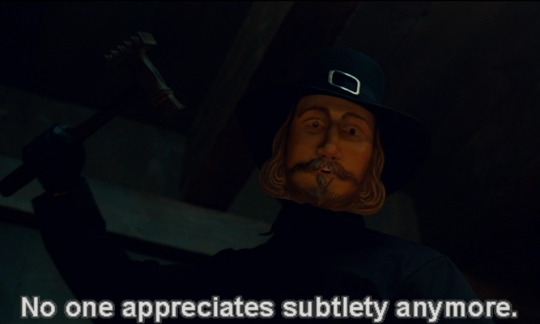



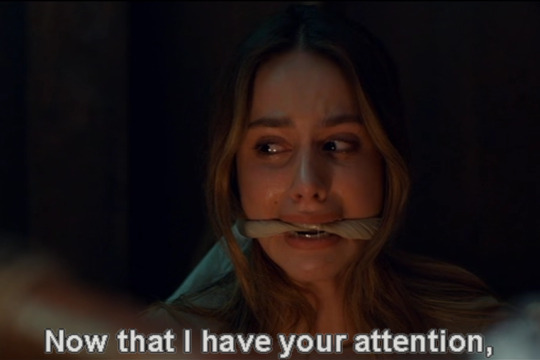
Se7en (1995) dir. David Fincher
Thanksgiving (2023) dir. Eli Roth
#Se7en#Thanksgiving#Thanksgiving 2023#Seven 1995#David Fincher#Eli Roth#Horror Movies#horroredit#horrorstills#Film comparison#I haven't made an original post in so long!#It feels so great!#Eek!
6 notes
·
View notes
Text
INLAND EMPIRE (2006, Lynch) x THE WIZARD OF OZ (1939, Fleming/Vidor)
(The comparison is meant to be between the visuals & concepts of the films, not the timing, which has been edited to spotlight the former...)
Like almost all his films, Lynch's dreamy INLAND EMPIRE is partly inspired by, & make nods to, OZ—the most well-known nod in IE being the "DOROTHY" Hollywood Walk of Fame star we see a close-up of after Laura Dern's character is stabbed. (Actually the star for Dorothy Lamour...)
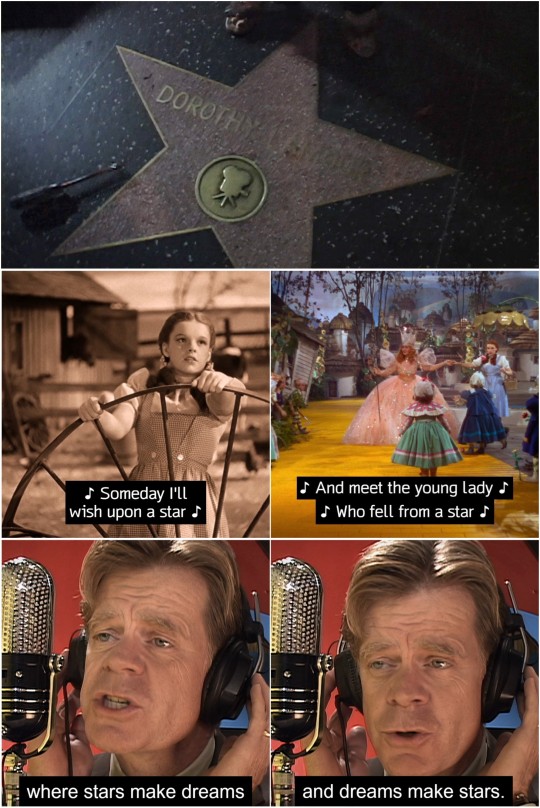


11 notes
·
View notes
Text

Parallel thematic imagery in El Laberinto del Fauno (2006) and Twin Peaks: Fire Walk With Me (1992)
I enjoy drawing comparisons between these two. They’re both some of my absolute favorites and share a similar narrative, yet had starkly different receptions at the time of their release. While El Laberinto del Fauno has received the longest standing ovation in Cannes history (22 minutes), Fire Walk With Me was allegedly booed at the same festival. The former generally receives more artistic praise and renown as a very important film, while the latter is still fairly controversial, widely misunderstood, and often identified as a cult classic.
Both stories follow an adolescent girl navigating the cruelty of her daily life, characterized especially by a domineering father figure. The latter are both mirrored by supernatural figures that the protagonist encounters in their fantasy or dream realms. The Pale Man is a representation of Captain Vidal’s cold, murderous nature, while BOB is the evil that tormented Leland as a child and is now a part of him, leading him to serially abuse Laura.
Ofelia enters the labyrinth and is guided through her trials by the faun, similar to Mrs. Chalfont, who gives Laura the painting that allows her to explore other realms in her dreams. The faun gives Ofelia the chalk which allows her to create the door to the Pale Man’s chamber. Both guides have unclear intentions, but the lessons that both girls learn while in these temporal places gives them the knowledge they need to virtuously complete their journeys. Even dear Dale Cooper isn’t as reliable of a force as he may think himself to be. He and the faun are both with Laura and Ofelia after their lives are brought to an end. These ends both happen in the same way; they are murdered by their father figures.
Nonetheless, the happiest moments for both Ofelia and Laura come after their death, when they see their own versions of ‘heaven’, their respective versions of absolute peace and comfort. They both smile as they realize their pain is over.
“One day, the sadness will end.”
#guillermo del toro#gdt#pan’s labyrinth#el laberinto del fauno#david lynch#twin peaks#fire walk with me#laura palmer#film stills#film#movies#film analysis#film comparison#comp lit#parallels
36 notes
·
View notes
Text
Monkey Man Packs a Brutal Punch: A Review
Kid, an anonymous young man who ekes out a meager living in an underground fight club where, night after night, wearing a gorilla mask, he is beaten bloody by more popular fighters for cash. After years of suppressed rage, Kid discovers a way to infiltrate the enclave of the city’s sinister elite. As his childhood trauma boils over the man who took everything from him.

It's nothing short of a miracle that the Monkey Man has finally emerged from the depths of development purgatory. After years of languishing in the turbulent waters of Netflix's production pipeline, Jordan Peele emerged as the savior, resurrecting the project and ushering it onto the grand stage of the silver screen. However, despite the palpable excitement and joy that accompanied its long-awaited release, I find myself grappling with conflicting emotions.
On one hand, the film's stylistic choices, characterized by the relentless use of shaky cam, uncomfortably close-up cinematography, and disjointed editing, left me feeling perpetually unsettled and, at times, downright nauseated. Throughout the entirety of its runtime, I found myself silently pleading for respite from the visual chaos, yearning for clarity amidst the frenetic flurry of motion that dominated the screen. Yet, alas, my desperate entreaties were met with indifference, as the film stubbornly clung to its chosen aesthetic, heedless of its potential impact on its audience. Moreover, while the premise of the film held promise, offering the tantalizing allure of a revenge thriller, the execution ultimately fell prey to the trappings of the genre. The narrative unfolded along a disappointingly predictable trajectory, with each plot twist and turn telegraphed well in advance, robbing the story of any genuine sense of suspense or intrigue. It became increasingly evident that the film was content to tread familiar ground, relying heavily on tired tropes and clichés rather than daring to chart a more innovative and unexpected course.

However, conversely, one cannot overlook the evident passion that director, co-writer, and lead actor, Dev Patel, has poured into this project. His directorial prowess not only breathed life into the script but also elevated it to new heights through the incorporation of cultural metaphors and meticulous artistic direction. Patel's vision packs a powerful punch, particularly evident in the film's action sequences. Despite some reservations about the framing, these moments are executed with a raw and brutal intensity that hits in all the right ways Featuring unique yet visceral kills and a trio of extended action set pieces, Patel draws inspiration from the John Wick franchise while infusing the genre with his own distinctive flair. Furthermore, the film deftly navigates numerous political and social themes with remarkable finesse, seamlessly integrating them into the fabric of the narrative. Particularly commendable is its handling of trans representation, notably through the portrayal of the Hijra people, which surpasses the treatment typically found in mainstream LGBT+ media.
As anticipated, Dev Patel shines brilliantly as an action star in the first trailer. He exudes a raw, ferocious intensity befitting a formidable action hero while also conveying an emotional vulnerability that encapsulates his character's traumatic past. Sikandar Kher and Makarand Deshpande deliver compelling performances as the antagonists, showcasing their formidable acting chops. However, their characters are somewhat underutilized, particularly Deshpande, who remains mostly in the shadows over 95% of the film. There's a yearning for a deeper exploration of his character beyond merely being a background figure. On a contrasting note, Vipin Sharma's unexpected presence brings a comforting warmth and love to the screen.
In summary, "Monkey Man" packs a powerful punch as Dev Patel establishes himself in the action genre. While the film may have its shaky moments, it brims with passion and creativity. It's evident that Patel is still honing his craft, but this marks a commendable debut for the first-time director. I can’t wait to see what he comes up with next.
On another note, how is it possible for a man who works at an underground flight club, to still have one of the most beautiful faces in the world despite being beaten to a pulp every night? Someone teach me this sorcery.
My Rating: B
#film#cinema#movies#movie#filmmaking#filmmaker#moviemaking#moviemaker#cinephile#cinematogrpahy#film comparison#film community#film is not dead#movie review#film critic#movie critic#film review#monkey man#dev patel#cinematography
2 notes
·
View notes
Text
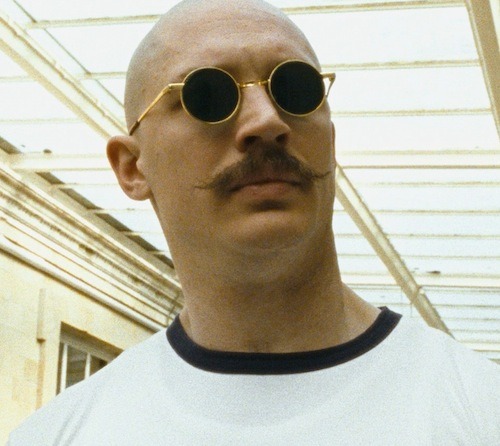
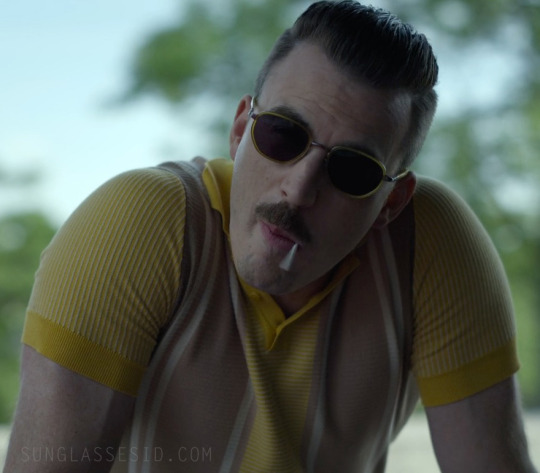
Bronson (2008) // The Grey Man (2022)
#i notice things sometimes#bronson 2008#tom hardy#bronson#the grey man#chris evans#lloyd hansen#chris evans aint my cup of tea but i appreciate the evans girlies#lilah on the mic ❦#films#movies#film comparison
9 notes
·
View notes
Link
For this week's episode, we are comparing Black Swan (2010) and Perfect Blue (1997), two films about performers who are plagued by perfectionism, obsession, and delusions.
----
The Movies:
Black Swan (2010)
Directed by Darren Aronofsky
Written by Mark Heyman, Andres Heinz & John J. McLaughlin
IMDb Rating: 8.0
Perfect Blue (1997)
Directed by Satoshi Kon
Written by Sadayuki Murai
Based on the novel by Yoshikazu Takeuchi
IMDb Rating: 8.0
-----
Find us on:
Discord - https://discord.gg/dxgmcfj552
Facebook - @ItTakesTwoPod
Twitter - @ItTakesTwo_pod
Instagram - @ItTakesTwo_pod
Youtube - @ittakestwonz
Tumblr - @ItTakesTwoPod
Our website - ItTakesTwo.co.nz
-----
Content warning: Discussions of mental illness, trauma, sexual assault, body horror, injury, violence, death
#it takes two#podcast#film review#film comparison#film#indie podcast#black swan#darren aronofsky#perfect blue#satoshi kon
4 notes
·
View notes
Text
Portra 400 vs. Portra 800 - Which 35mm Film To Invest In
Discover the differences between Kodak Portra 400 and Portra 800 35mm film in our detailed comparison.
Choosing the right kind of film for your creative pursuits can make a difference in what you capture. The desired results are impacted by your photography skills but also the type of film you decide to go with.
Here we’re going to explore two popular Kodak Portra 35 mm films; Portra 400 and Portra 800, comparing their characteristics and helping you decide which one might be a better investment…

View On WordPress
#35mm camera#35mm film#analog film#film comparison#film photography#kodak 35mm film#kodak portra#portra 400#portra 800#portra film#portra films
0 notes
Photo



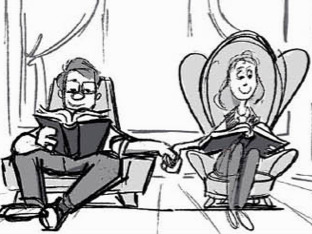
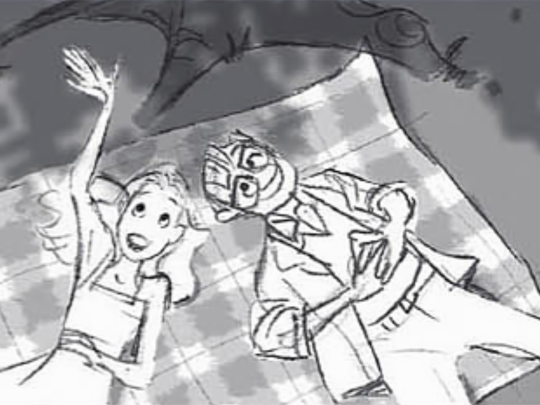
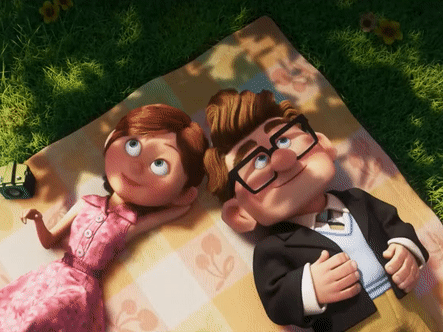
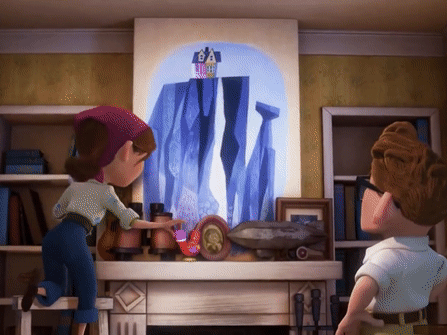
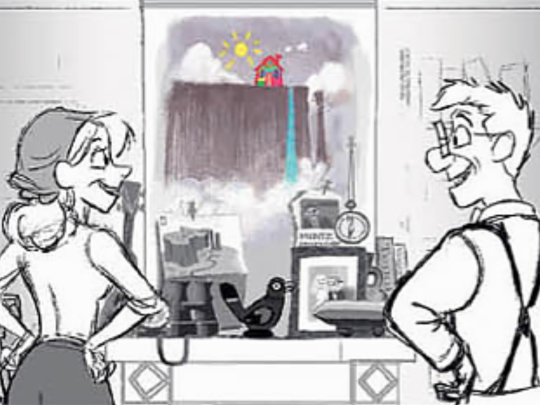

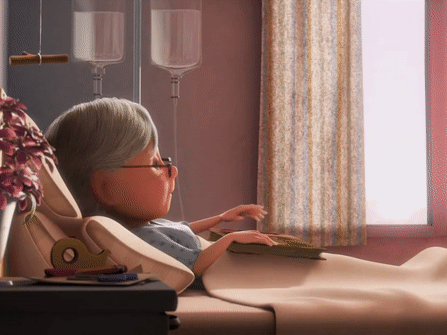
Up storyboards → Final film
#disney#pixar#up#storyboards#final film comparison#disney concept art#pixar concept art#pixar animation#animation#animation art#art#artwork#illustration#concept art#storyboard#mine
8K notes
·
View notes
Text
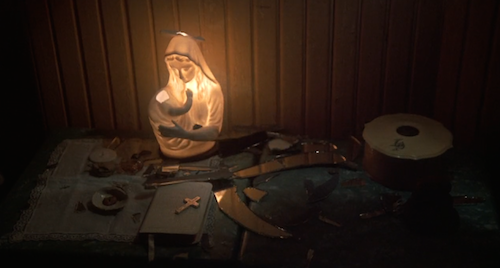
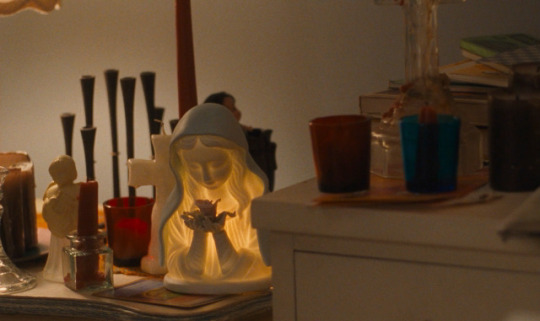
Carrie (1976) / The Virgin Suicides (1999)
#carrie#carrie 1976#stephen king#brian de palma#horror#the virgin suicides#sofia coppola#jeffrey eugenides#90s#70s#movie#film#parallels#comparatives#comparison#sissy spacek#piper laurie#kristen dunst#kathleen turner#virgin mary
6K notes
·
View notes
Text
FNAF SPOILERS! SCROLL! TALKING ABOUT THE SPRINGLOCK SCENE!
i’ve seen so many people discussing the springlock scene in both negative and positive ways and i think it brings up really cool points about how matthew played that scene and balanced fan expectations with his own characterisation.
i think the discussions around this movie have rlly exposed the disconnect between fanon and canon in fnaf, especially talking abt the core games in isolation, bc frankly in the game universe (ignoring the books) we get Very Little characterisation for William other than the obvious, but Matthew managed to add so much in the way he talks and his body language.
in the reveal scene, we see afton at arguably his peak. in his first scene, he comes off as somewhat demeaning and judgemental until he recognises mike’s name, at which point he seems to have this nervous energy, rushing to cover it up but stumbling slightly, his reaction to the tables being turned even slightly is massive.
this is a man who committed multiple mrdrs in essentially broad daylight, hid the bodies in the most obvious place, and still got away with it, and then kept the crime scene as a trophy of his actions, and an ongoing prison sentence for his victims. he has been in complete control for decades, and is confident that he can deal with any kind of threat quickly. his confidence in his reveal is palpable
it changes when vanessa shoots him. the whole parallel with vanessa and the animatronics is hugely interesting too- how william refers to the animatronics almost endearingly as “kids” when he wants them to obey, how both vanny and the animatronics have an unearned loyalty to him, almost a pseudo-adoption through what he did to them, taking them from their parents and keeping them under his thumb, forever stuck as naive, forgiving, obedient children. vanessa breaking from that control shakes him, but the mask slips back into place almost immediately.
then, he’s outsmarted by the brother of one of his victims, and the child he planned to end next. his pseudo-children turn on him and he can no longer manipulate his appearance or shed his skin to escape. he explodes on them, and his language is incredibly telling that he is being dishonest.
he calls them small, trying to belittle them into submission, even though they are ten feet tall metal animatronics powered by rage. he is grasping at straws to regain control, and failing miserably.
finally, the springlocks go off. the locks in the movie look more like a ribcage, so the first two likely puncture his lungs. they’re slow, and painful, but he doesn’t scream or beg or sob. he grunts and groans, gritting his teeth and only letting out sounds of pain that sound almost involuntary. there is no way in hell he would visibly let himself show weakness or pain in front of these creatures that he believes he has control over. he isn’t brought to his knees until there are eight metal spikes embedded in his abdomen. he doesn’t let the mask fall for even a second, until he literally PUTS THE ACTUAL MASK ON and finally collapses. even then, he’s fighting for consciousness, twitching and writhing with no control over his body. william afton thrives on control, and his soul will not rest until he gets it back.
it’s why he keeps the pizzeria- he always comes back. he can’t help but return to the scene of the crime, putting on his old costume, continuing his killings. he revels in being a constant threat on the horizon. and now, he knows he is going to die, and he knows the suit will bring him back, and noone will be able to get rid of him then. so he puts the mask back on, and waits.
in terms of the sfx- they’re pretty accurate. with stab wounds, you need to leave the knife in the wound as long as possible for best chance of survival, as it stops the blood from escaping. in terms of the springlocks, there wouldn’t be copious amounts of blood as the locks are keeping the wounds filled- which is good because it means a slower, more painful death.
#fnaf#fnaf movie#eden rambles#william afton#matthew lillard#springtrap#five nights at freddy's#fnaf spoilers#idk i thought it was a great scene#ppl just need to manage their expectations of what fnaf 1 Actually Is in isolation#not the years of other media and fandom and lore and theory#we literally saw him get springlocked one time in 8 bit with no audio and four frames. how is this worse in comparison#wanna make another post talking abt how the film explores images vs the reality when you look deeper#specifically abby and her drawings/the drawings at freddys vs mike’s motivation being based on the images he sees in his dreams#and how it’s so perfect for fnaf 1 being a game almost entirely made of just scary images without actually exploring the reality#that these robots are Children and Scared and Lost#tldr the fort scene was necessary
3K notes
·
View notes
Text



#jedi taylor
#tswiftedit#taylorswiftedit#tswiftgif#taylor swift#the eras tour#eras tour#eras tour film#1989#blank space#*mine#*2023#*gifs#mine: eras tour#mine: 1989#1k#this is the most unserious post I've made in my life ASDKLFJAH#I simply had to this comparison has not left my mind for the past nine months !!#taylor listen I need you to cast my other glow stick wielding fave in your upcoming movie
1K notes
·
View notes
Photo

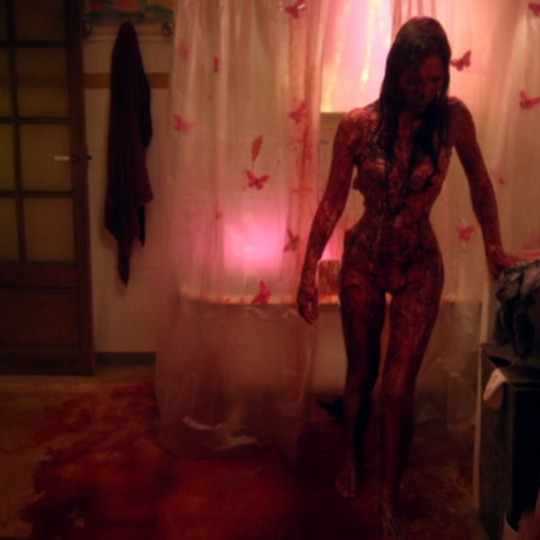
In My Skin (2002) dir. Marina de Van
The ABC’s of Death: X is for XXL (2013) dir. Xavier Gens
#In My Skin#Dans ma peau#The ABC's of Death#X is for XXL#Marina de Van#Xavier Gens#Movies#filmstills#Film Comparison#Horror#Horror Movies#horroredit
91 notes
·
View notes
Text
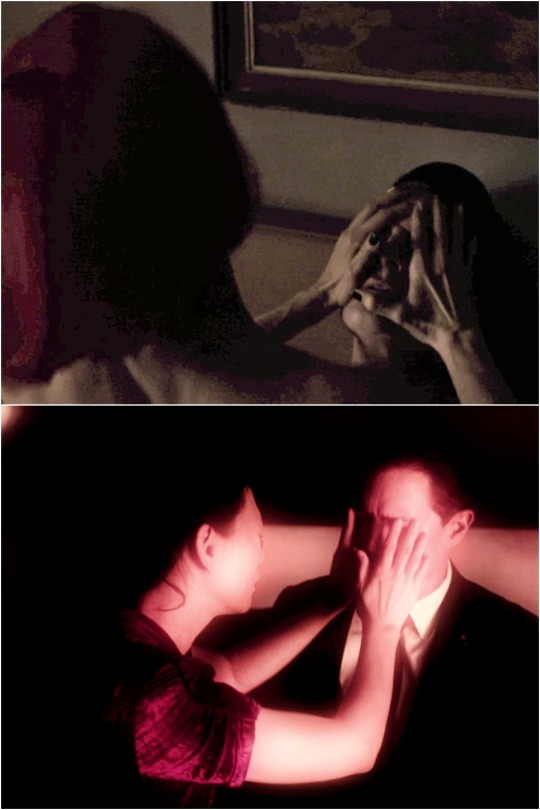
TWIN PEAKS (2017), Part 18 x Part 3.
Diane trying to unsee x Diane-as-Naido trying to see.
(Worth remembering: "Naido" is almost "Diane" backwards.)
As always, "seeing" is a potent concept in TWIN PEAKS (& for Lynch's work generally), about which much could be written...
Just from Part 17:

6 notes
·
View notes
Text
me reading a post about non-existent fictional mobsters from a movie that has never existed

#goncharov#look my opinion on goncharov is that it's still funny#i still like the meme#i love the idea of posting your reactions to a film that does not exist#because the beauty is that it's SUCH a great film that all others pale in comparison#written by a man whose mother was italian and whose father was a license plate#i love the art!#i love the idea!#but some stuff is like#you have not seen a mafia movie have you#stop trying to bring it into our reality!!!#you are not going to be able to write the greatest mafia movie that has ever existed#WAIT YOU CAN EDIT TAGS NOW WITHOUT REWRITING#I JUST DRAGGED ONE AROUND AND I CAN EDIT IT????
9K notes
·
View notes